Chateau de Chillon
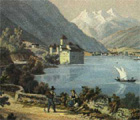
Stunning environment and nature
Surrounded by the white tops of the mountains and the soft waves of Lake Geneva, Chillon castle is a real beauty spot. It is built on a rocky island along the antique road to Italy. The castle shows two faces: It is a princely residence to the lakeside but an impregnable fortress to the mountains.
Architecture
The castle consists of 25 building units. The oldest part dates back to the first millennium. In the 13th century under count Peter II of Savoy, Chillon was completely transformed and considerably enlarged. Roman and early gothic architecture is characteristic. Today, the castle is carefully restored and can be visited from the basement (dungeons) to the tower. (Special attention is given to the prison, where Bonivard was chained to the pillar between 1530 an1536. His destiny inspired Lord Byron to write the famous poem «The Prisoner of Chillon» (1816).
Collections
The castle is furnished and presents a rich collection of antique pewter objects, weapons, chests and items found during the excavation. Temporary expositions and cultural manifestations are regularly organized.
General history
An extraordinary medieval fort set in a lovely scenic location ! Such is the castle of Chillon as it stands today.
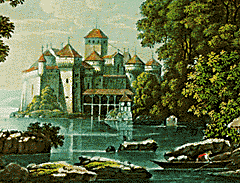
No Swiss historic monument is better known throughout the world. It has become a symbol of our country, representative of its beauty, the harmony of its shape and the visibie strength and stability it exudes. Built on the water's edge, Chillon is unique with one side a fortress facing the ancient road to Italy, the other a princely residence facing the Lake of Geneva.
The origins of the castle go back a long way in the past. The first written reference was made in 1160, although it is known that the rock on which the castle was built had been inhabited in antiquity. This is easily explained by its strategic position controlling the narrow passage between lake and mountains, on this major northsouth route. The former presence of a Roman outpost is very likely (roman coins and debris were found during excavation work on the Chillon rock, in 1896~. Even if we know nothing about the reputed existence of a castle in the early Middle Ages, the fact remains that the oldest constructions on the lower parts go back to the 11th century ...
From the middie of the 12th century, Chillon castle belonged to the Counts of Savoy. It was completely modified and considerably enlarged in the 13th century, over the existing foundations.
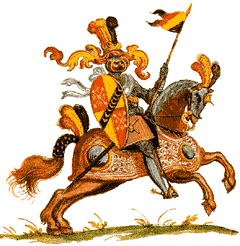
The 13th and 14th centuries are Chillon's truly golden era. The favou rite summer residence of the mighty Counts of Savoy, keeping watch on the mountain side over the road to Italy, and turned towards their homeland on the other side of the lake, Chillon played a major role in the subtie stratagems of its owners. The castle as it stands today, the inner courtyards, the storage rooms and gaois, the magnificent great halis, the Camera Domini, the St. George's Chapel, all go back to this period, as do the castlets military structure and court organisation.
The occupation of Vaud by the Bernese, from 1536 to 1798, has left visible marks, mostly in decoration and maintenance. Since Vaud became independent in 1798, Chillon castle has belonged to the Canton.
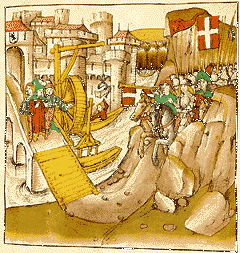
In the Romantic Era, 19th century, the castle of Chillon attained fame through many narratives told by writers and poets such as Jean-Jacques Rousseau, Shelley, Victor Hugo, Alexandre Dumas, and most of all Byron. Inspired by the story of Bonivard's imprisonment in the 1 6th century, the latter wrote the poem 'The Prisoner of Chillon" which is known throughout the world.
The "Association du Chateau de Chillon" was founded in 1887. Together with the Canton of Vaud, it has been working for more than a century on the restoration, enhancement and running of the castle. Among all the feudal castles in Switzerland, Chillon is today the most valid example of a lordly fortress of the Middle Ages.
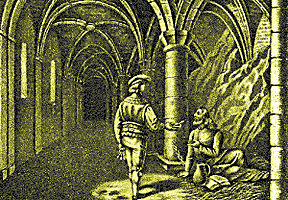
Several major works and transformations have been carried out in recent years, but the future still leaves us with a considerable task. Our goal remains to preserve, to show and "explain" Chillon.
Our intention is to review the castle's inner and outer presentation globally: to install adequate premises for reception, information and documentation, to reconsider the visiting order inside and outside, and open parts to the public that are actually ciosed; to propose visits of various lengths of time, on different subjects, according to the visitor's specific interest. The work of conservation and restoration still continues with the most modern means at our disposal, and consequently we find out more about the architecture and evolution of the castle. Research is continually bringing to light new facts. These will no doubt provide us with further explanations of its history, and allow us to prepare exhibitions and publications that will interest both the expert and the amateur. An extensive and exciting programme for the future of the Castle of Chillon !
UChillon continues to attract considerable and well deserved attention: over the past few years 300'000 and more visitors have come to see it every year (record in 1990 with 350'000). Coming from all parts of the worid, these visitors show a legitimate admiration for Chillon and thus become excellent ambassadors for our castle and for the tourist industry of our region and our country.